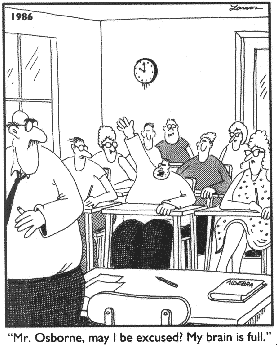The discipline of stopping
/
Day after day on dailymile, Twitter, and Facebook, runners whine about their injuries - and keep running. To those who struggle to get off the couch and into the gym, this must seem quite ridiculous.
Really, it is. But there's something addictive about running that makes people do stupid things. It's tempting to treat every outing as a time trial, hoping to go faster or farther (or both!) than ever before. Despite detailed training plans and sound advice from coaches, books, magazines, websites, and other runners, the overzealous athlete fails to listen to the body, and the body breaks down.
I have been there. I've trained as carefully as I thought was possible, and still ended up injured. No matter what, it's still too much, too fast. All summer long, I wouldn't have dreamed of stopping after 1.64 miles - where's my discipline? If I'm really hurting and can't make it to three, at least I should make it to two so I have a nice round number to record in my training log.
Coming off of nearly four weeks without running (due to an injury sustained while running, naturally) has changed my perspective. It's just not worth the risk - sure, I can push a little bit farther, but at what cost? I've already lost so much of my former speed and endurance that I'm no longer attached to it. If I run just a little bit more, because I feel like I have to, will it compromise the next run?
I'm building back slowly, and more than one runner has said to me, "Ah, I wish I had the discipline to do that." Imagine - a dedicated distance runner, maybe a half-marathoner, desiring the discipline required to stop once you've started.
 Mr. Larson, I apologize for the copyright violation but this is the perfect illustration for my post. I reference this cartoon all the time in lessons to help my students realize when they are that guy.Knowing when to stop is a highly important and frequently overlooked skill. When I work with students on breaking a musical piece down into small sections, they often forget to choose their stopping point. This makes it harder to focus on the area that really needs work, because they'll just keep on playing until the end of the piece. It's better, and harder, to stop at a designated point even though you could keep going.
Mr. Larson, I apologize for the copyright violation but this is the perfect illustration for my post. I reference this cartoon all the time in lessons to help my students realize when they are that guy.Knowing when to stop is a highly important and frequently overlooked skill. When I work with students on breaking a musical piece down into small sections, they often forget to choose their stopping point. This makes it harder to focus on the area that really needs work, because they'll just keep on playing until the end of the piece. It's better, and harder, to stop at a designated point even though you could keep going.
The discipline of stopping requires you to be aware of how you're feeling, and act accordingly. You can ignore fatigue, restlessness, boredom, frustration, and pain, but the bill will come due at some point.
Several years ago I was working with a six-year-old beginning piano student. She was learning to read notes, and so I gave her some flashcards to practice with. I carefully selected ten flashcards out of the stack of dozens and set them aside - these were the ten notes we had gone over so far.
When she and her father came back the following week, I learned that they had gone through the entire stack. It takes years for a child to build up to that point! Not surprisingly, she hadn't gotten much out of the experience. Also not surprisingly, but sadly, she discontinued lessons a week or two later. They didn't know when to quit, and the frustration caused by that experience was too much for her to overcome.
There are many other examples of this phenomenon: here I am, up past my bedtime, writing this post. But I'm pleased to say I did not clean my plate tonight at El Potro, I have not checked my email since 3:30 PM, and last night I quit reading the compelling Little Bee before that buzzy, hungover, too much feeling hit me. I am practicing the discipline of stopping, and look! - now I am done with this post.
